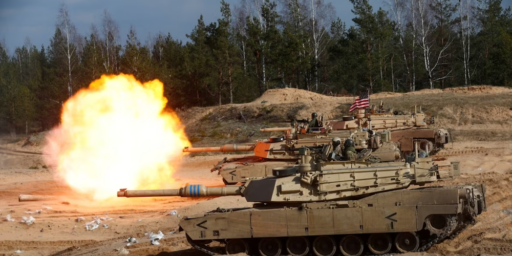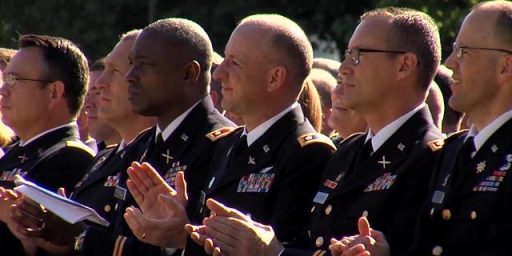Army Reorganization
StrategyPage has a bit more:
The U.S. Army wants to spend $20 billion over the next seven years to create a force of 42 active duty combat brigades (from the current force of 33), and increasing the number of National Guard combat brigades from 15 to 22. In addition, many unneeded field artillery, air defense, engineer, armor and ordnance battalions will be disbanded while increasing the number of military police, transportation, petroleum and water distribution, civil affairs, psychological operations and biological warfare detection units. The new combat brigades would be smaller than the current ones (two battalions versus three) and have more support units attached to enable the brigades to operate independently. The current 33 brigades include 11 light infantry, 17 heavy mech infantry and armor, 5 Stryker) will be turned into 15 infantry brigades, 22 armored brigades and five Stryker brigades. The new armor brigades will combine tanks and mech infantry by having four companies (two tank and two mech infantry) per each of its two battalions. The armor brigade would also have a recon battalion. The exact details of the reorganization are still being worked out. For example, the fourth and fifth brigades in divisions would use the current headquarters of the aviation and engineer brigades to form headquarters.
This makes so much sense that one fears it won’t actually happen. If Rumsfeld, Schoomaker, and company do pull this off, it’s the most successful reorganization ever.




This sounds somewhat like the infamous “Pentomic” army of the 50s. God, I hope I’m wrong.
The key here is the creation of more psyop, MP, linguists, etc. on active duty and the shift of some heavy forces to the reserves. We’ll see.
It sounds like they’re building an army that can more easily deploy brigade- or battalion-size units to hotspots on short notice. But I’m curious about how it will impact _large-scale_ army ops, such as another OEF/OIF thing. Will these new brigades be able to play nice together?
—